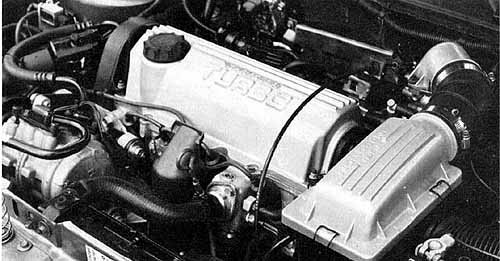
Turbo Engine Identification page
SOHC Non-intercooled turbo engines

The 1984-1987 2.2 Turbo I- The first domestic turbo-motor from Chrysler. 142-146 hp depending on what car body it was installed in which determined set boost level. (7.5-10 psi) Only minor changes took place during these years to the basic configuration of the engine.
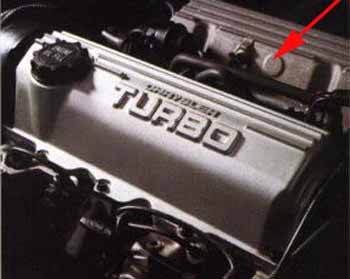
(Note the lack of charge air sensor)
In 1988 Chrysler made a major change to the Turbo I engine- They got rid of the "log" intake manifold for a better flowing unit, replaced the flat slider cam with a roller cam for better idle and less engine noise and replaced the large Garrett turbo with a smaller & faster spooling Mitsubishi unit.
1988 Shelby CSX-T's received a black Shelby valve cover but no other mods. (They were Hertz rental cars)
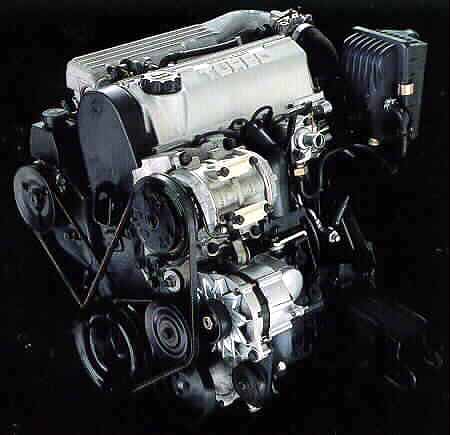
In 1989 Chrysler retired the 2.2 Turbo I and introduced a new engine- The 150 hp common block 2.5 Turbo I. With it's longer stroke it generated loads of low end grunt which was perfect for combating the perceived and dreaded "turbo lag" that deskbound magazine writers loved to harp about. This engine continued on till 1992 and was the last of the non-intercooled turbo engines produced by Chrysler.
SOHC Turbo Intercooled engines
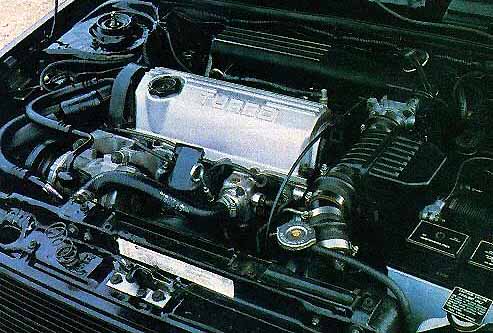
Ironically Chrysler's first 174 hp Turbo II Intercooled engine you could buy wasn't even a true TII motor! Shelby sold 500 GLHS Omni's to the public in 1986 with Turbo I engines sporting TII induction. Of course he only had to cover them for 3 years/32,000 miles unlike Chryslers 5/50,000 warrantee. Shelby also sold the '87 CSX, 87' GLHS Charger and 87' Shelby Lancer with this hybrid setup.
The first "real" TII motor debuted in 1987 on the production line Shelby Z Daytona which came equipped with cross-drilled block and head, steel crank, better rods and full floating Mahle pistons. The unique black 2-piece intake was used just for the 86-87 model years and then only on the intercooled engines.
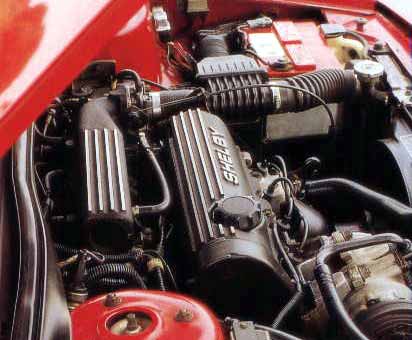
TI/TII hybrid engine in Shelby Lancer
The black "Shelby" valve cover was used on about half of the '86 GLHS's and all of the '87 CSX , '87 GLHS Charger & Shelby Lancers. The production line Daytona Shelby Z had a black intake & black valve cover that just said "TURBO".
In 1988 Chrysler went to the 1 piece intake manifold- Identical to the TI piece in every respect except it was painted black and had a charge air sensor installed, also the TII engines continued to use a Garrett turbo unlike their TI counterparts. In 1989 Chrysler introduced the common block TII engine which carried over the TII engines bulletproof internals now housed in a much stiffer, stronger block. In late 1989 (Shelby- CSX) and 1990 (Chrysler- Daytona, Shadow, Lebaron) you could buy a TURBO IV- Basically a 1989 Turbo II motor with a Variable Nozzle Turbocharger. The 2.2 VNT was a great concept in reducing lag but it cost more then a regular TII setup and there was numerous control issues. The final nail in the coffin was that with minor software changes the 2.5 TI produced just about as much torque and hp as the 2.2 VNT but without the intercooler and fancy expensive Garrett VNT turbo. The VNT's biggest dirty little secret was that it made less hp then last years TII- 162 hp vs. 174 hp. The VNT was originally designed to be used on a 1.5-1.8 liter engine and had to spin at 179,000 rpm's to provide 12 psi of boost for a 2.2- by comparison a TII Garrett does the job at only 140,000 rpm.
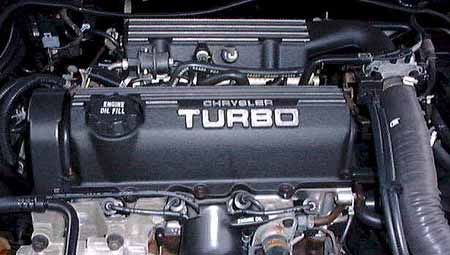
The 1990 Turbo IV VNT
DOHC Turbo Intercooled engines
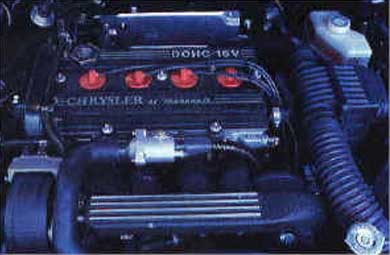
Chrysler had TWO DOHC 2.2 Turbo Intercooled engines- The first was the Maserati designed version sold as an optional engine from 1989-1991 in limited numbers in Chrysler/Maserati TC coupe. It developed 200 hp at 5,500 / 220 ft lb. at 3,400 at a mild 11 psi of boost with conservative fuel and timing schedules. Another impediment to more power was the turbo used- A very small Japanese 'IHI' model from Warner ISHI. Very little interchanges between this engine and USA spec TII engines- Maserati seemed determined to change as much as they could internally. Only 501 of these engines made it into the public's hands and parts are very scarce which is a shame because it's a very durable design.
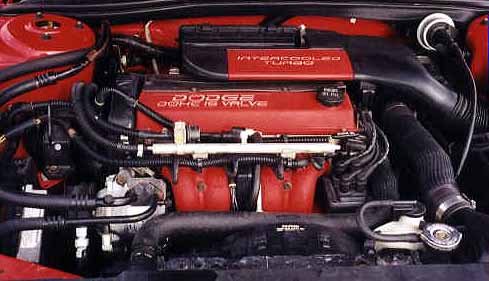
Chrysler's other DOHC Turbo engine (224 hp) was in development so long by Lotus many figured it would never make it into public hands! How long was it in development? It's called the Turbo III because it was in development LONG BEFORE the 1989-1990 SOHC Turbo IV!
It was to be released in 1989 in an all wheel drive Daytona from Shelby Industries- This plan was more then likely axed due to delays on Lotus's end and the fact that Shelby closed his doors in 1990 due to the spiraling cost's of dealing with Chrysler. Saved from oblivion by Mopar car guy and head Chrysler honcho Robert Lutz the engine was used in the 91-92 Spirit R/T and 92-93 IROC Daytona. Total production was 2830 units and the engine has been plagued with timing belt problems, porous heads that like to crack and cam hardness issues. Parts needless to say are very expensive due to the engines limited production. Why were so few cars sold with this engine? I suspect Chrysler had problems selling fully optioned out 4-cylinder performance cars at $20,000 a pop.